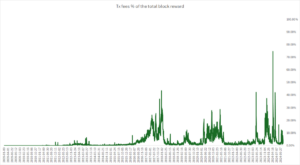“It would be a mistake to leave the Fed with a weak role of stablecoins.”
– Jerome Powell, June 21, 2023
On the longest day of the year, Fed Chair Jerome Powell took to the podium to testify before congress and the House Financial Services Committee. Last week, the Powell-led central bank had decided to temporarily pause rate hikes —the fastest and most aggressive interest rate increases in U.S. history— in their mission to battle the massive price inflation found downstream from the lockdown-induced monetary inflation via stimulus measures. Less than a month away from the announced July launch of FedNow, an inter-banking communication platform, Powell finds himself at a crossroad of monetary policy, regulation, and capital requirements before the formal founding of the digital dollar system.
The New Dollar: FedNow & USTs, Not Retail CBDCs
“The status of the dollar as the world’s reserve currency is very important.”
– Jerome Powell, June 21, 2023
The dollar has been digitized for a long time; be it the Zelle or Venmo credits in your retail account, or the dollar balance in your checking account at Bank of America. But generally speaking, the mechanisms behind the transfer of Treasuries and other reserve assets backing these numbers on a screen have remained at the technical agility of a fax machine. The dollar may be the world reserve currency, and can be transacted via intermediaries on obvious centralized banker rails, or less obviously on Ethereum rails via ERC-20 tokens in the form of popular retail stablecoins, but the U.S. Treasuries held by these novel credit creators remain the world reserve asset. These bonds are strictly issued by the U.S. Treasury to be sold to the private sector to create dollars, incentivized with yields dependent on the federal funding rate set by the Federal Reserve. The public has generally feared the direct issuance of some form of retail CBDC (central bank digital currency) due to surveillance concerns and currency seizure from a centralized issuer, but fewer realize both the level of financial surveillance already imposed by banks, never mind the ability for these trusted third parties to censor, blacklist and even expose retail to their counter-party risk. All of these actions are made increasingly possible via the digitization of the currency with an encroaching reliance on centralized payment rails, but up until next month, the communication network for interbank asset trades has remained lossy and slow.
FedNow, slated to launch next month, serves multiple purposes, but perhaps none as important as creating a much more efficient lever for the Fed to have 365/24/7 control on overnight banking rates, such as SOFR, effectively setting the cost of borrowing short-term liquidity between fractionalized private banks attempting to meet their depositors’ withdrawals. You have probably heard the phrase “reverse repo” once or twice, but the underlying mechanic is often misunderstood. The “repo” stands for a repurchasing agreement; essentially a contract between two entities in which Bank A, with excess dollar liquidity, agrees to lend cash to Bank B, with overnight liquidity needs, via a short-term loan collateralized by Bank B’s assets such as USTs, with the conditions that Bank B will repurchase their securities, usually the next morning (“overnight”), plus a percentage-based fee that Bank A gets to keep. A reverse repo is essentially the same behavior, except that Bank A is bond-rich, cash-poor, and thus asking Bank B for dollar-denominated liquidity. This exact scenario came to fruition within the recent regional bank failures in the U.S., and the Fed created new mechanisms to backstop the liquidity needs of the depositors. In the case of the ever-growing reverse repo market, Bank B is routinely the largest American banks, and sometimes even the Fed directly. FedNow is a digital lever, made possible via the internet, for complete centralized control on the overnight rate of borrowing dollars, the necessary transferring of treasuries between banks, and thus the reshoring of dollar-denominated activity away from the Eurodollar market, and back to the United States within the scope of the Fed and the Treasury.
Private-Entity Dollar Issuance
“We would not support a central bank digital currency for individuals. If we did have a CBDC, it would be intermediated by banks.”
– Jerome Powell, June 21, 2023
Shortly after the fall of FTX last fall, the NY Fed launched their digital dollar pilot program, featuring BNY Mellon, PNC Bank, Citi, HSBC, Mastercard, TD Bank, Truist, U.S. Bank, and Wells Fargo, as well as cooperation with SWIFT. Notable within this quorum of too big to fail private sector banks is the inclusion of BNY Mellon, the largest U.S. bank, who holds treasuries for popular stablecoin USDC, and PNC Bank, the former 22.4% owner of BlackRock, the world’s largest asset manager, who only earlier this week filed with the SEC for approval of a spot Bitcoin ETF. The SEC has recently made waves themselves by filing their own notices against Binance and the publicly listed Coinbase for brokering sales of unregistered securities in the form of cryptocurrency tokens. While BUSD, the Binance-issued USD stablecoin, was listed as being an unregistered security, USDC, the Circle-issued USD stablecoin, second in market cap value behind only Tether, was left off the notices, despite listings on both exchanges. Powell took the idea of stablecoins being important to the Fed and the greater U.S. dollar system a step further this morning when he insinuated that not only are stablecoins not a security, they are money. “We do see payment stablecoins as a form of money, and in all advanced economies, the ultimate source of credibility in money is the central bank…We believe it would be appropriate to have quite a robust federal role in what happens in stablecoins going forward.”
He went on to further articulate his views on not needing a direct-issued government dollar, and instead relying on the private sector banks to continue their role of government debt purchasing via USTs in order to create credit via dollars in retail accounts. “We would not support accounts at the Federal Reserve by individuals…such accounts would be managed through the banking system.” In February, the SEC served a Wells Notice to Paxos, the issuer of BUSD, directly limiting Binance’s ability to compete in the dollar creation industry. Via the signatures from the arms of regulation from the Fed, the Treasury, the SEC, and even the Department of Justice, the entities allowed to make digital dollars are being hand selected in front of our eyes. In order to continue the cycle of needing to purchase government-issued debt to create dollars, the U.S. government has moved to direct policy, regulatory comment, and even disciplinary action on off-shore dollar creation, changing the landscape for stablecoins, and even the dollar itself, forever, mere moments before the founding of the digital Federal Reserve.
Basel III
“Basel III is an international capital requirement we should go ahead and complete.”
– Jerome Powell, June 21, 2023
As American commercial banks begin to integrate digital assets such as Bitcoin and dollar-derivatives such as stablecoins, the need to ensure the public that on-sheet liquidity for speculative action on commodities exists creates a unique opportunity to tilt regulation in the favor of the dollar. Basel III would require any bank wanting to hold bitcoin, other digital assets, or even gold, would also be required to hold an equal-part dollar to dollar-denominated valuation of their investments. This sudden comment on adoption of this international capital requirement would force a net-demand for dollars in the U.S banking system, despite a high monetary inflationary environment. For banks or registered investment vehicles looking to offset inflationary effects by purchasing alternative reserve assets such as bitcoin, this regulation would mean that an increase of valuation of bitcoin in a dollar-pair would also increase the need for dollar liabilities on their balance sheet. Want to run a responsible bank and meet capital requirements while also holding bitcoin on your balance sheet? Better be prepared to also hold a lot of dollars. The idea of the Bitcoin-Dollar is a parallel to the petro-dollar system, which was upheld from the gold window closing via the Nixon shock until only somewhat recently. By creating a monopoly on the in’s and out’s of oil to strictly U.S. dollars, the U.S. was essentially able to re-peg their inflating dollar to an ever-demanded energy commodity, and create a mass buyer of dollars. As the Fed and SEC circle the waters on both regional banks and private issuers of stablecoins, the downstream effect of Basel III will create permanent demand for dollars, even in a “hyperbitcoinization” environment. Powell mentioned the Fed doesn’t have specifics on proposals for capital requirements at this time, but that there will be a future proposal that comes to the Fed board later this Summer.
BlackRock ETF
“Let me tell you, it’s not who the President is. It’s who’s controlling the wallet of the President.”
– Serge Varlay, BlackRock Recruiter
The recent application filing from BlackRock, an investment firm with assets under management totalling $10 Trillion, has kicked off a filing spree from other institutional asset managers in the race for the first approved exchange-traded fund offering exposure to bitcoin. WisdomTree, Bitwise, and Invesco have all since filed to the SEC seeking to launch Bitcoin ETFs, despite a universal rejection of every spot Bitcoin ETF application previously filed, notably including NYDIG, CBOE, and Fidelity. The newly found resurgence in confidence of approval perhaps comes downstream of BlackRock’s near perfect record of getting ETFs approved, sitting at a 575 to 1 success rate. Within iSHARES Bitcoin Trust Form S-1 Registration Statement was their disclosure of using Coinbase for bitcoin custody, as well as a notice of potential conflict of interest within an affiliate of theirs acting as investment manager to a money market fund, the Circle Reserve Fund, which the issuer of USDC uses to “hold cash, U.S. Treasury bills, notes and other obligations insured or guaranteed as to principal and interest by the U.S. Treasury, and repurchase agreements secured by such obligations or cash, which serves as reserves backing USDC stablecoins”. It later states that “an affiliate of the Sponsor [BlackRock] has a minority equity interest in the issuer of USDC”. The S-1 includes a line stating the “price of bitcoin may be affected due to stablecoins (including Tether and USDC), the activities of stablecoin issuers and their regulatory treatment”. The Cash Custodian and Trust Administrator of the BlackRock ETF is listed as the aforementioned digital dollar pilot program partner Bank of New York Mellon.
While ETFs are often used as a mechanism to short commodities by large financial institutions, the recent signaling from the most important U.S. regulatory bodies reveals a real possibility of increased digital dollar creation and an increased purchasing power of the demand-inelastic reserve asset, bitcoin. There is perhaps no larger investment firm than BlackRock, and no larger banking entity than Bank of New York Mellon. There are few government bodies more influential on the global economy than the Fed and the SEC.
Welcome to institutional adoption. Just don’t fucking dance.
Source: bitcoinmagazine.com


